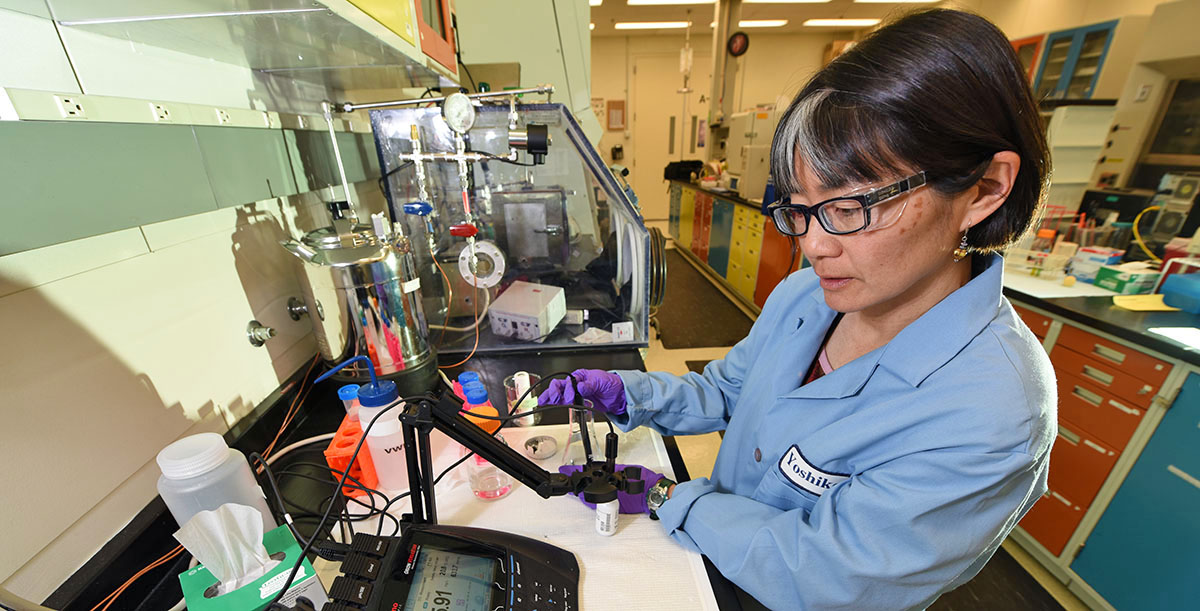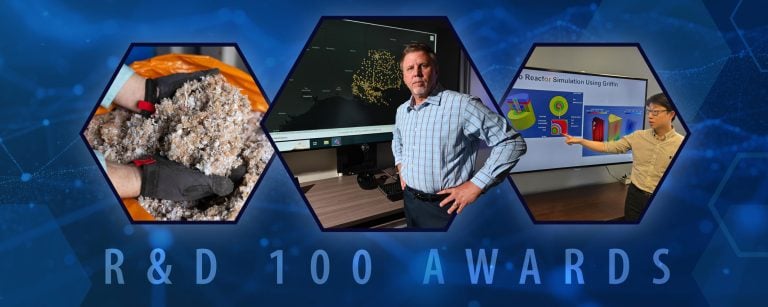Growing up, Yoshiko Fujita did not really see herself as a scientist. She even graduated from Williams College without, to her physicist father’s amazement, having taken a single college-level physics class. Thinking she wanted to go into law or a political science field, she ventured out to Washington, D.C., to work for an environmental consulting firm that was helping the Environmental Protection Agency (EPA) write regulations for hazardous waste. It was during her time in DC that Fujita realized she wanted to study environmental engineering.
“It seemed sort of novel to me at first,” Fujita explained. “I didn’t know that many engineers. But while I was helping the EPA, I realized there was so much left for me to learn about the work I was doing, and I had a friend going into environmental engineering, which inspired me to pursue that area of study for my masters’ degree.”
An undergraduate chemistry major, Fujita found that her love of science reawakened during her postgraduate studies, and she continued pursuing environmental engineering through a Ph.D. program, where she began her wastewater research career. Working with a treatment plant in Orange County, California, Fujita examined water quality in reclaimed wastewater and learned how the wastewater’s organic compounds in particular might change following introduction into groundwater.
In graduate school, Fujita focused primarily on transformation of organic pollutants in the environment; when she came to INL, this focus switched to inorganic pollutants, like metals and radionuclides.
A common perception with metals, Fujita noted, is that they cannot be destroyed. They can, however, be changed drastically in chemical speciation, such that they are no longer soluble or able to move around in water. Such changes can be facilitated by microorganisms and result in altering the environmental impacts of inorganic contaminants.
One major focus of her research was learning how to use microorganisms to promote the precipitation of calcite, or calcium carbonate. “Around Idaho, calcite is common. You can incorporate other trace metals into calcite fairly easily, and if we can get these metals to precipitate in calcite, we can immobilize them and prevent their movement,” Fujita said. This was her initial project when she began working at INL, and she continued the research for about 12 years.
Recently, she has been conducting research for the Critical Materials Institute (CMI), investigating the impacts of wastes from new critical material recovery processes on wastewater treatment. She is also the deputy Focus Area lead for crosscutting research in CMI.
For her work, Fujita was honored in April 2019 with a Laboratory Director Award. She is not only an outstanding researcher, but an active member of the INL community. She has participated in workshops and as a tour guide for the My Amazing Future initiative and serves as a regular mentor to summer interns. She particularly hopes to encourage young girls and women to pursue studies and careers related to STEAM – science, technology, engineering, arts and math. “I think it’s important to have a broad-based education,” Fujita said. “It’s essential that students learn to write and communicate and learn social sciences as well.”
“Scientists are people, too,” she added with a chuckle, “and the better you understand how people think and operate, the more successful you will be in any field.”
In her spare time, Fujita enjoys hiking, skiing, riding her bike, playing outdoors in the mountains, and eating and cooking good food. Athletic as well as academic, she often plays Ultimate Frisbee at Freeman Park with other INL employees; Fujita also enjoys soccer.
To her summer interns as well as to any aspiring INL scientists, Fujita says: “Try to learn about a lot of different things going on around you. It really helps to be exposed to people doing all lines of research. Through this, you can identify methods in common, such as similar ways of thinking, but you also get ideas for new tools and new approaches that you can apply to your own research. INL has so many opportunities to learn what others are doing – go to seminars, attend events outside your own area of research, and talk to people in different departments.”






